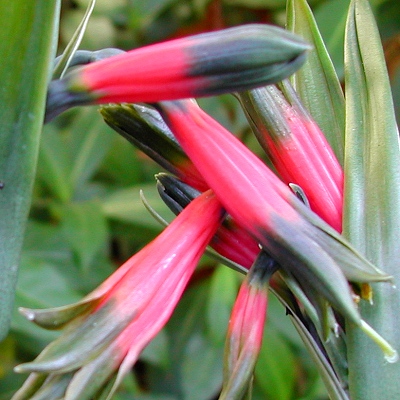Queen Amaryllis Germinating the seeds
It's normal for some of the papery seed coat to break off during shipping or planting, but avoid damaging the thicker embryo, since it's fragile
When to plant -- Plant your seeds promptly for the best germination. Getting started -- These seeds sprout well by soaking them in water - see: Sprouting seeds in water. To begin, put them in a small cup of water, and place it in a spot that will stay between 68 and 78 degrees F (20-26°C) during the day. A bit cooler at night is ok. Avoid letting them get above 80 degrees F (27°C) for prolonged periods. I recommend placing a minimum/maximum thermometer near the cup. Keep it in a bright spot out of direct sun. A bright LED panel or bulb kept 3 inches (8 cm) away provides the right amount of light (See: "Growing indoors with LED lights"). Replace the water every day. They should start sprouting within about 3-4 weeks, and continue for another month. Gently remove any seeds with a little white root, being careful not to break it. Plant them in small pots or cups with drainage holes. Use a well-draining soil mix, such as half potting soil and half perlite. Gently push the seed into the soil until the root is covered, then add water until the soil is evenly moist (but not fully saturated). It's ok if part of the seed is showing as long as the root is covered. Until the first leaf appears, ensure that the soil surface doesn't dry out. If you enclose the pots in a plastic dome or bag to maintain moisture, leave it open slightly for fresh air to enter. Continue keeping them in a bright spot at the temperature range mentioned earlier. Once they send up their first leaf, about a month later, you may give them some weak sun if you wish, but protect them from stronger sun the first 3 months. When they are 1 week old, feed every 2 weeks with a small amount of diluted liquid fertilizer (about 1/8 strength). Hydroponic fertilizer is ideal for young seedlings, since it is easily absorbed and complete. When they are 2 months old, you may switch to a granular fertilizer that contains micronutrients, following the dose on the package. Avoid transplanting them the first 4 months. Transplant gently to avoid damaging the roots. At 9-12 months old, you can expose them to a wider temperature range, but protect them from freezing temperatures the 2 years. Tips on growing older plants are here.
- Jeff Strange Wonderful Things
|
|||||||||


